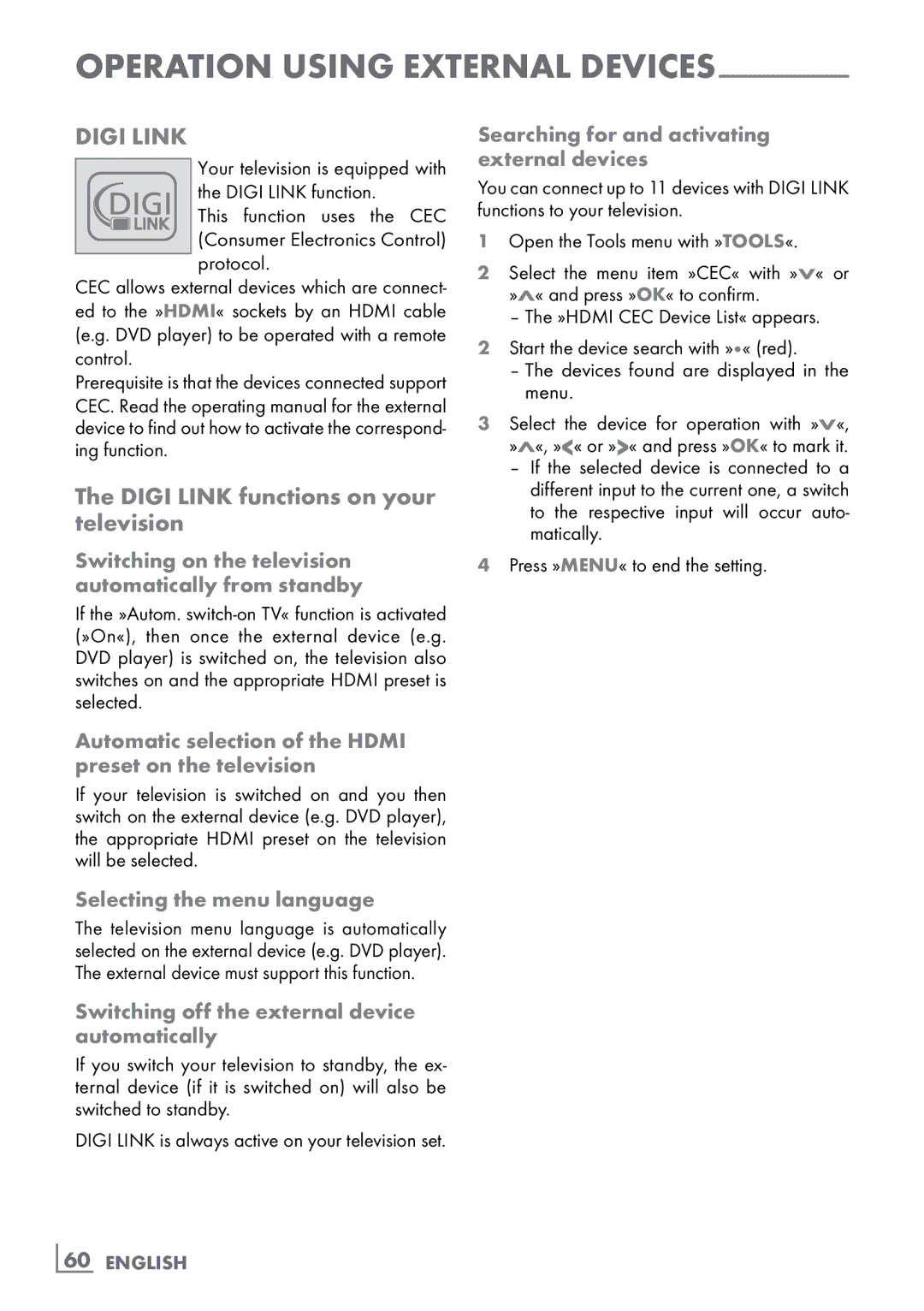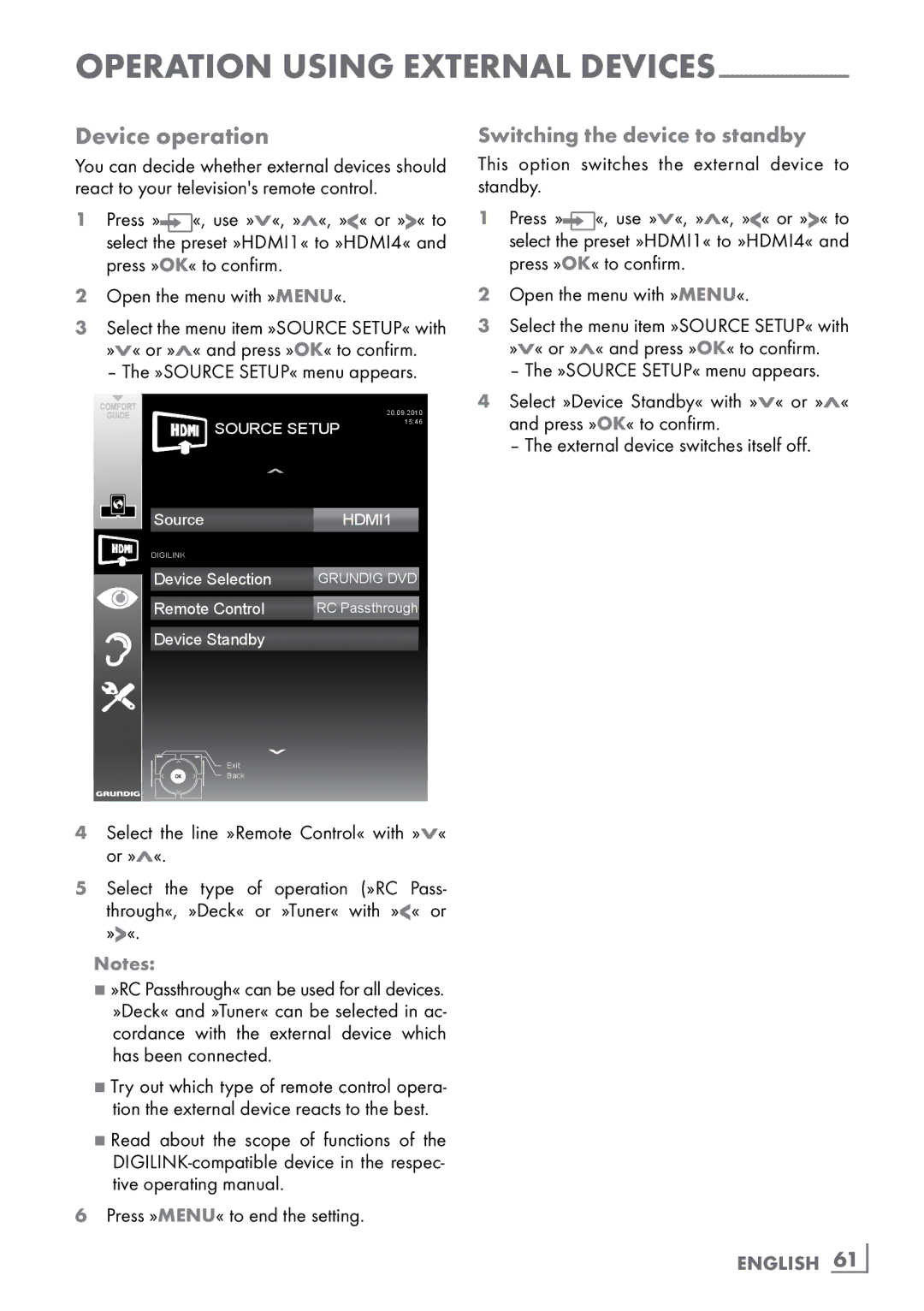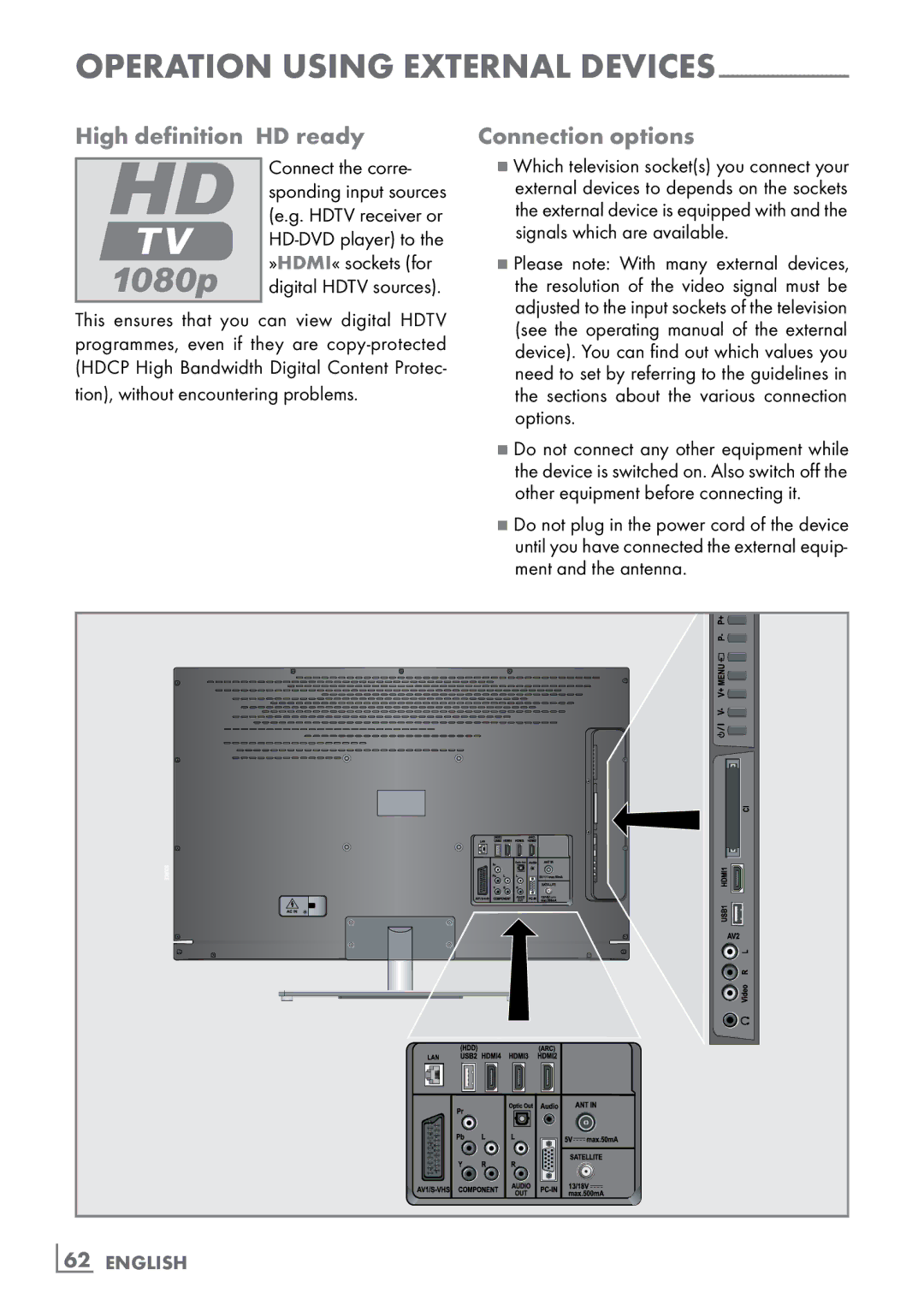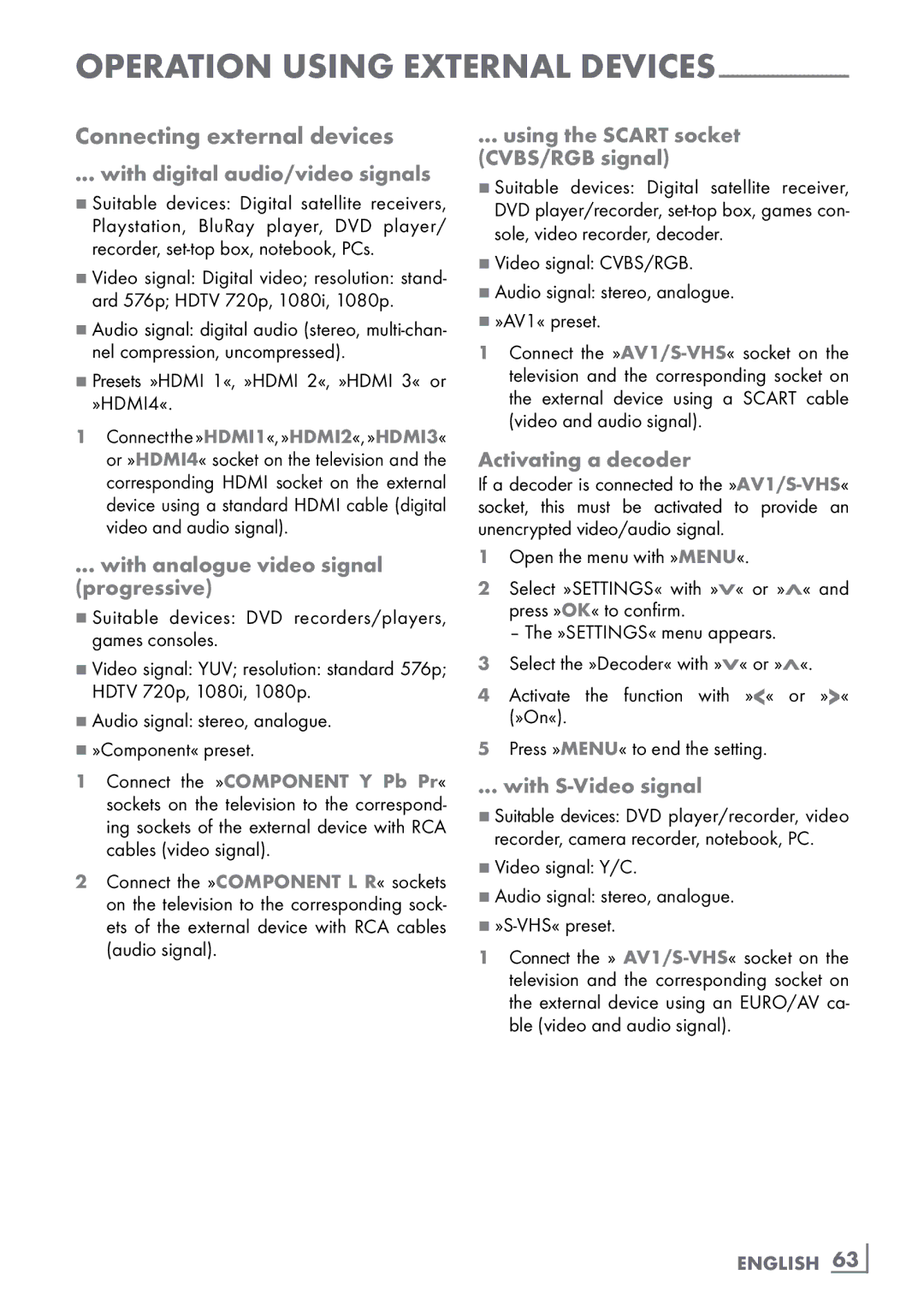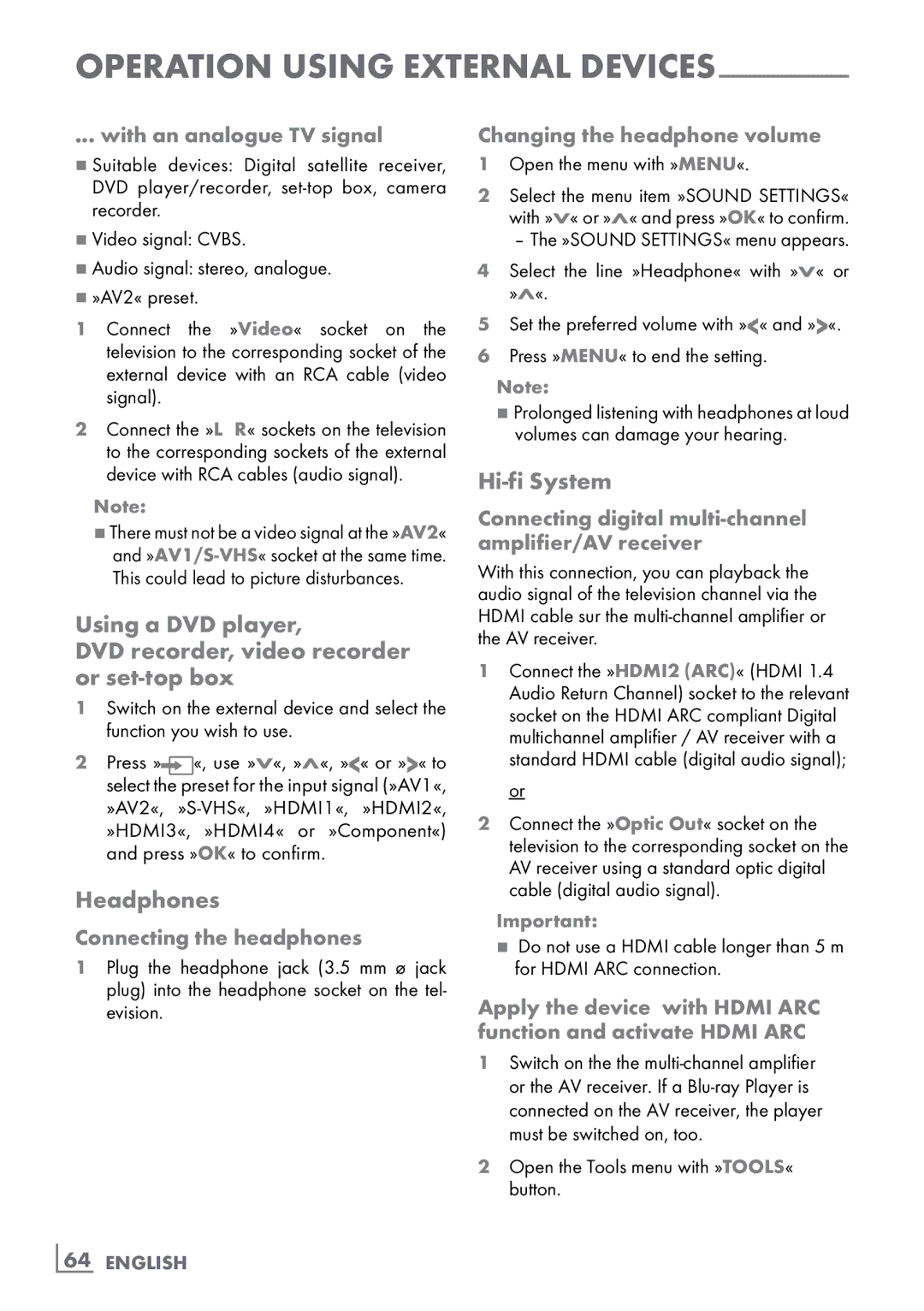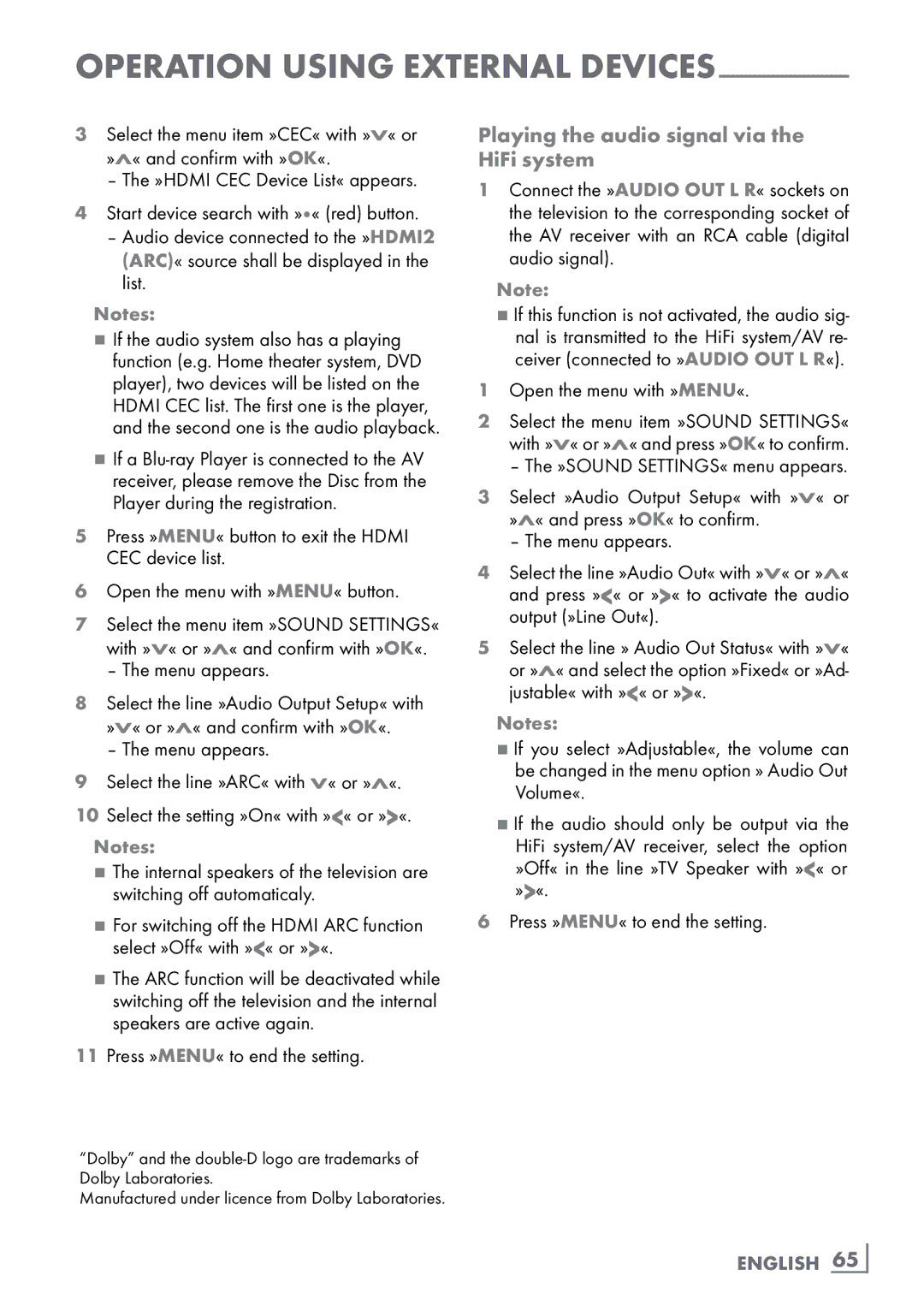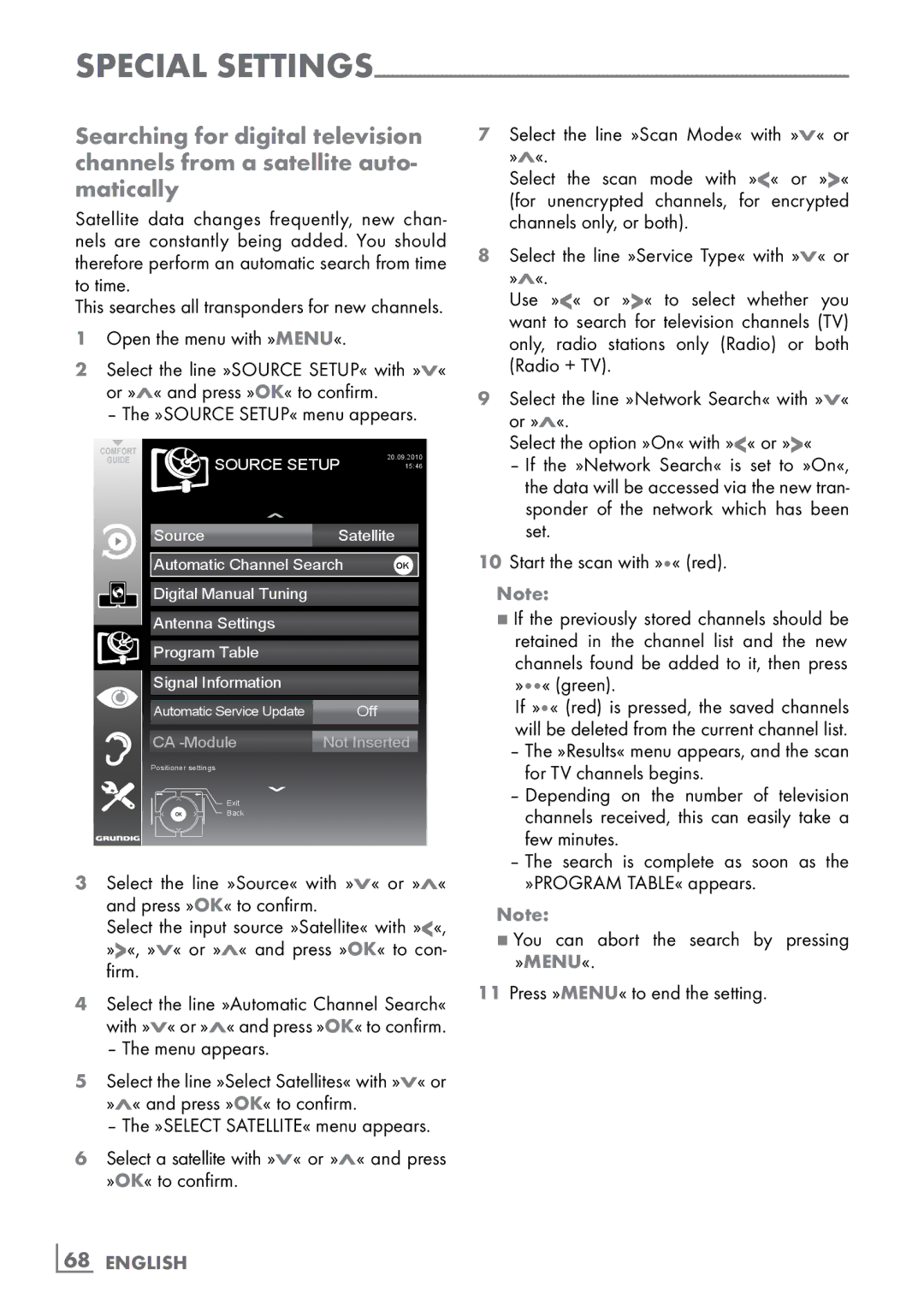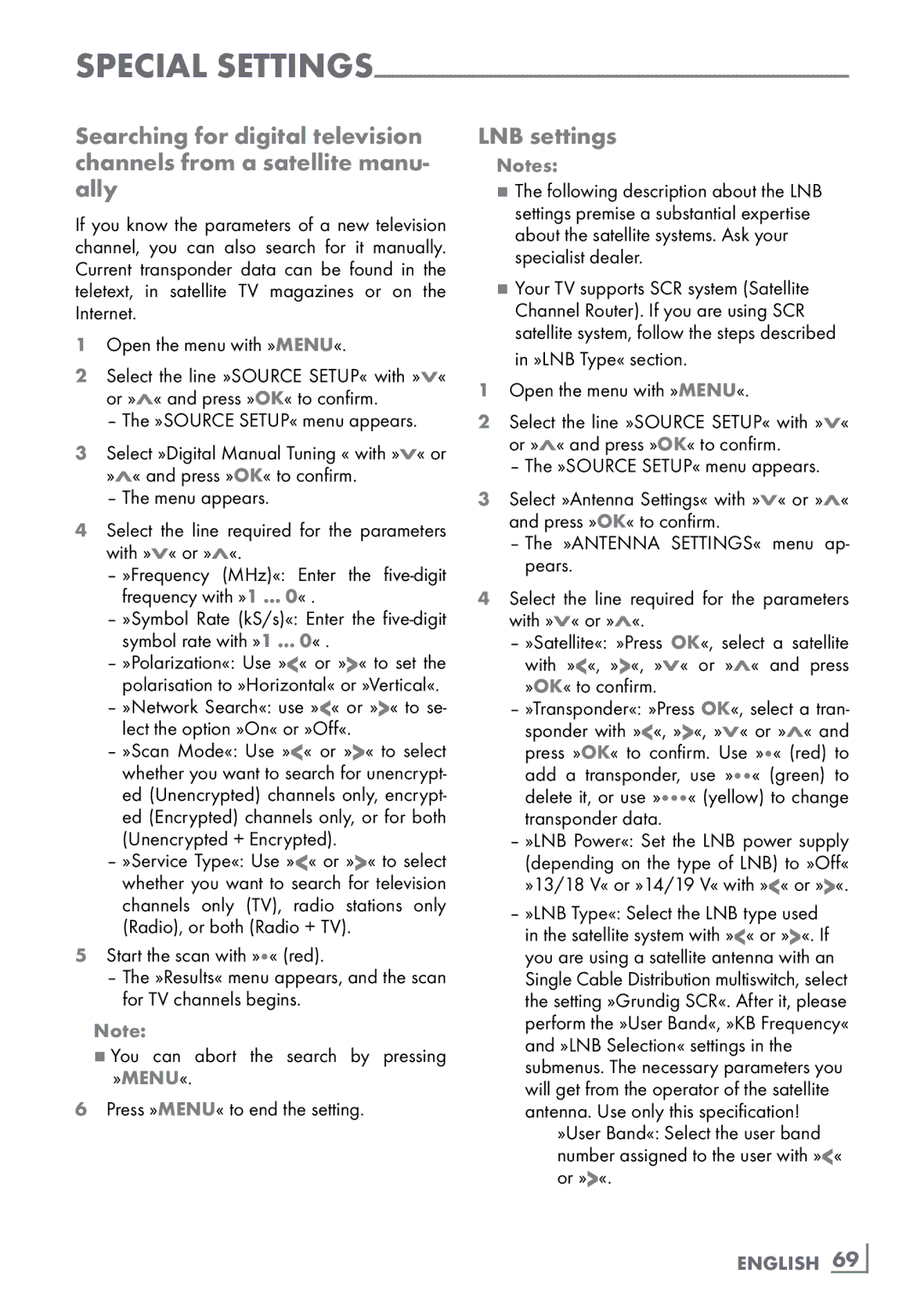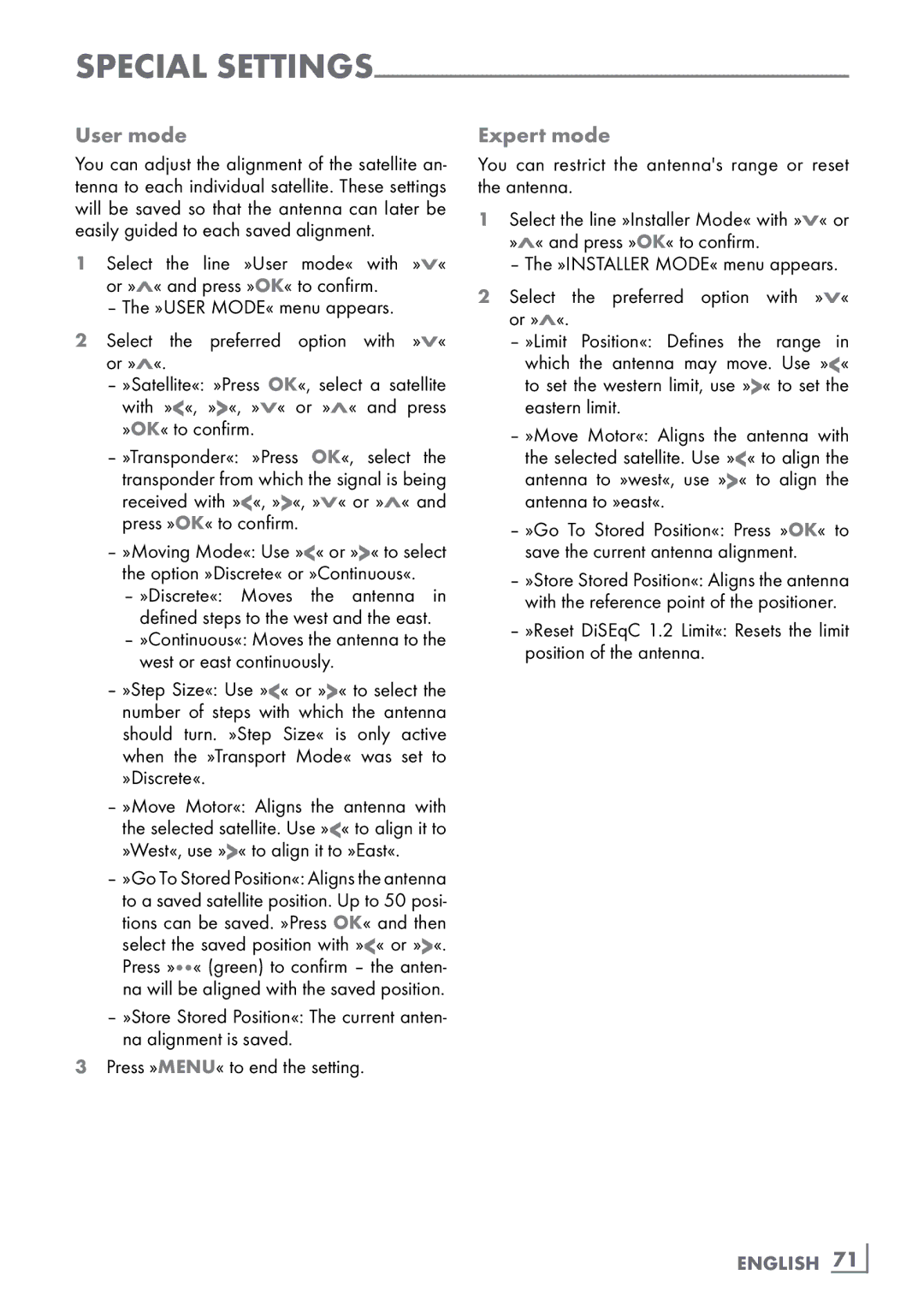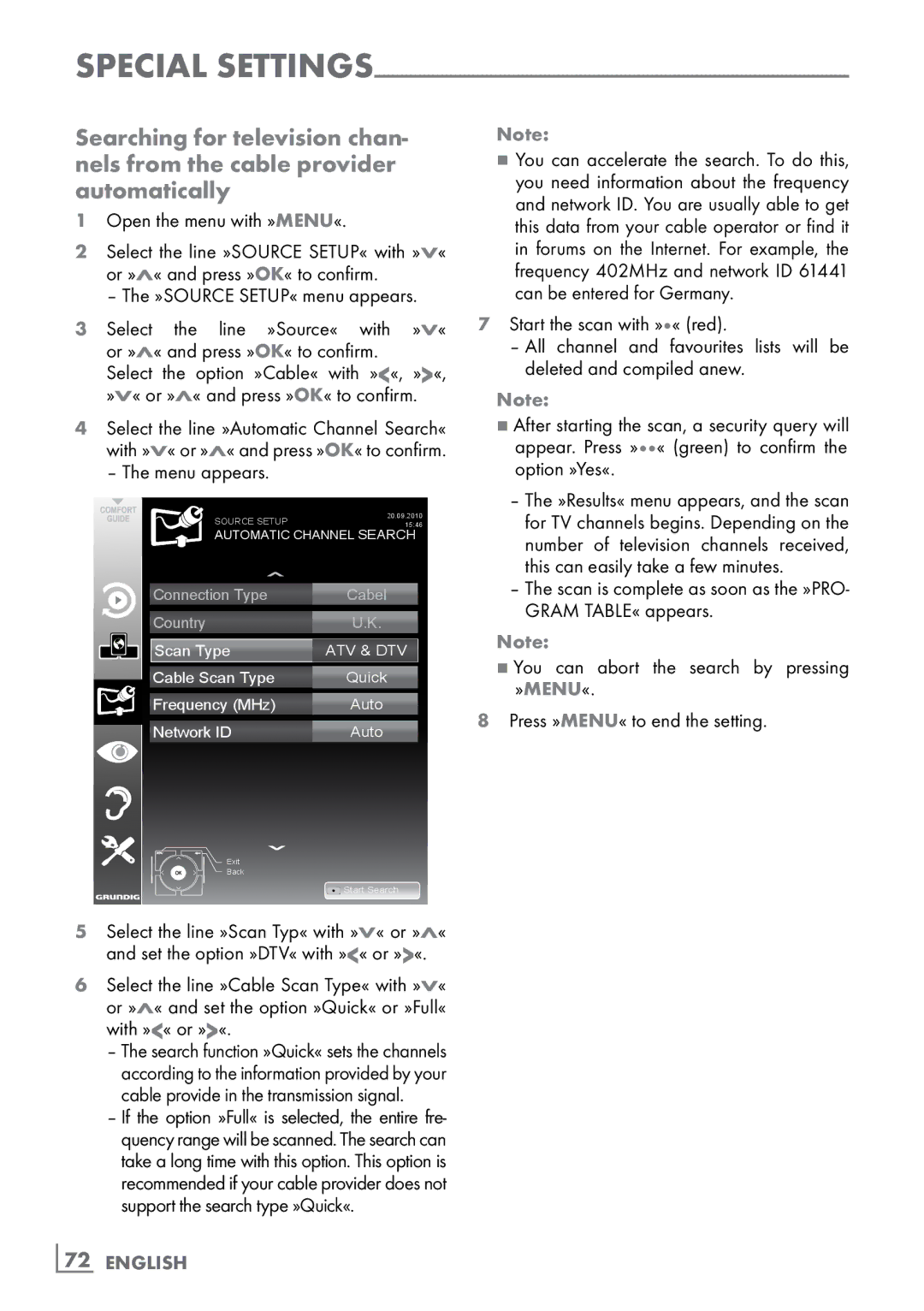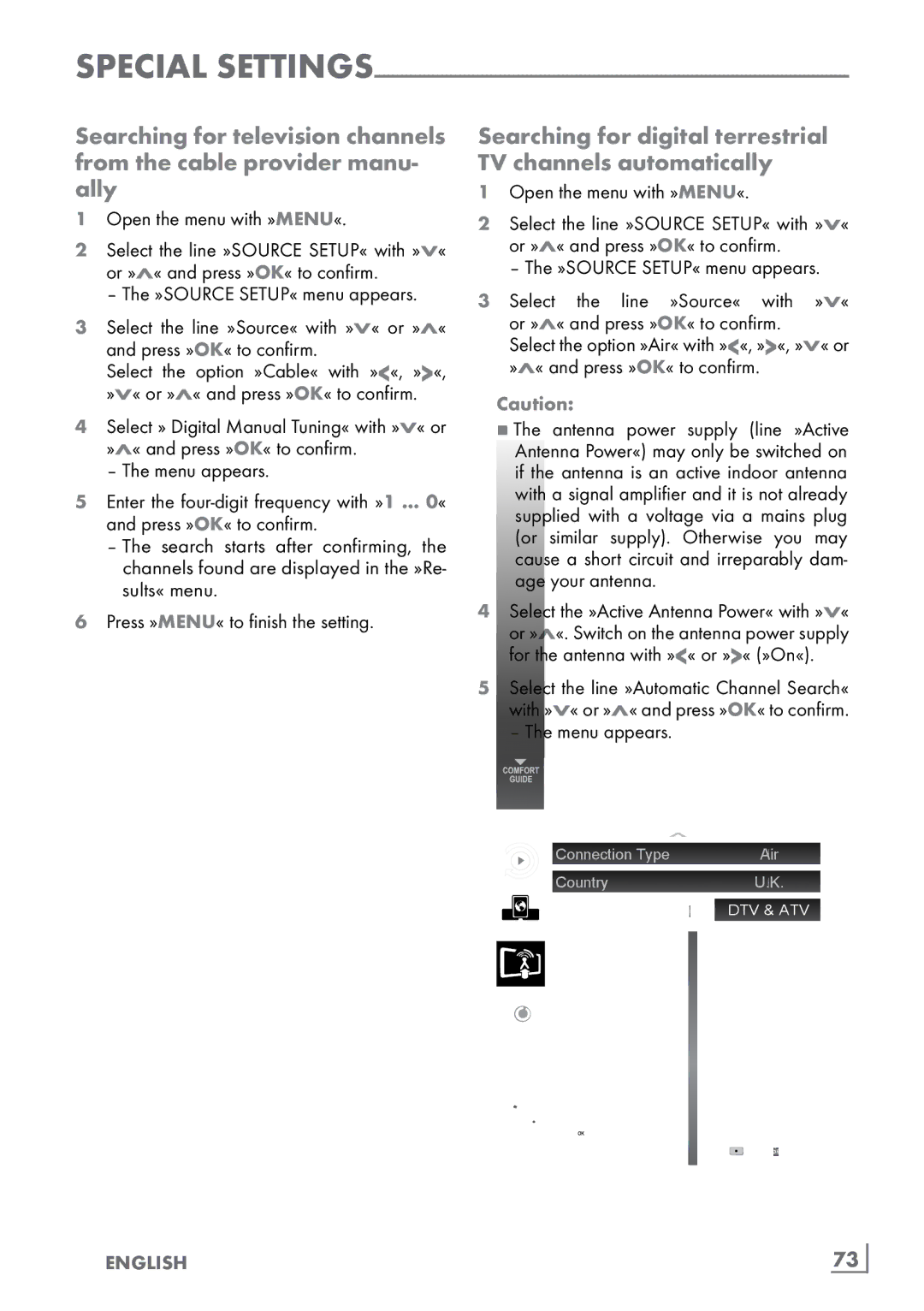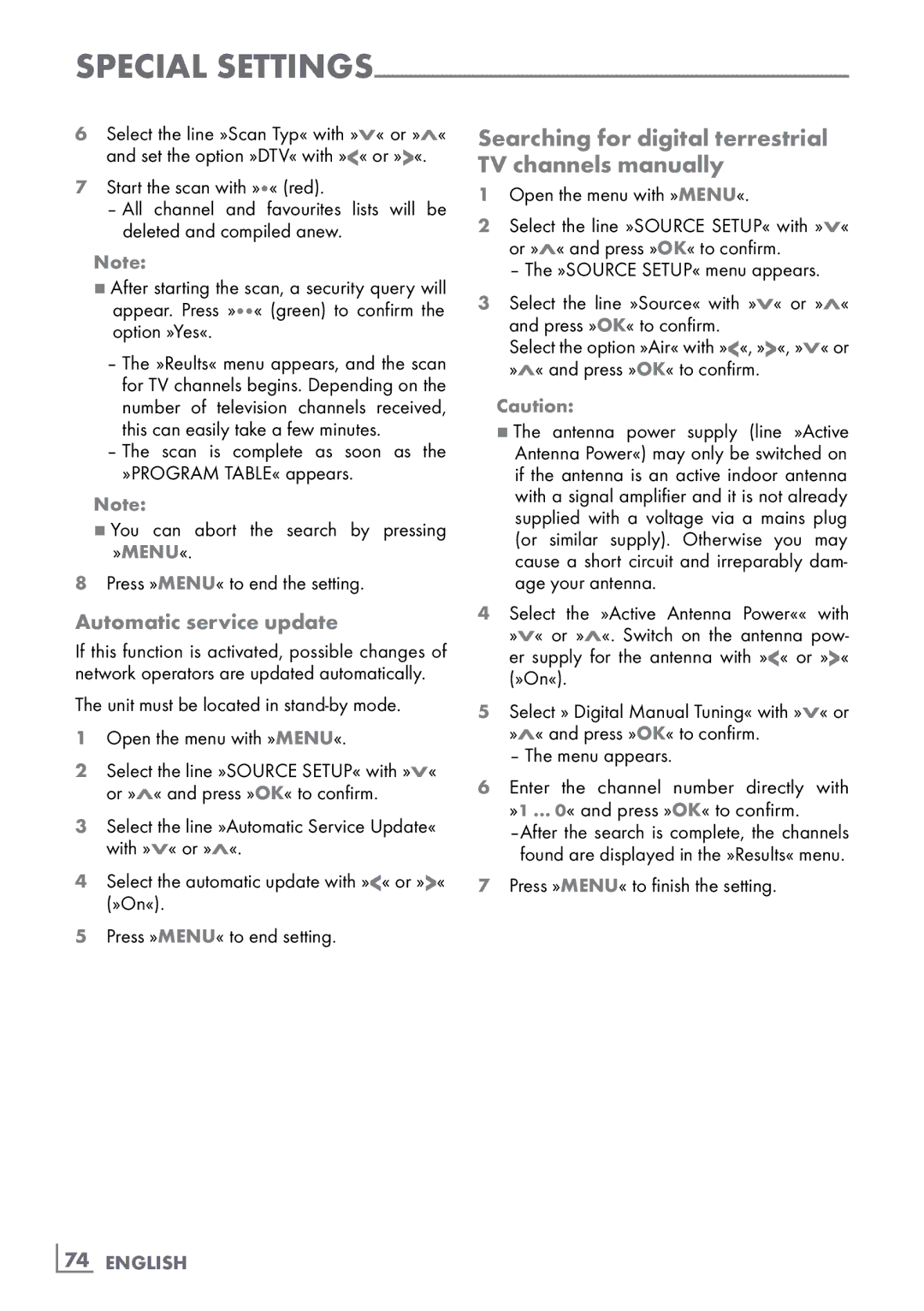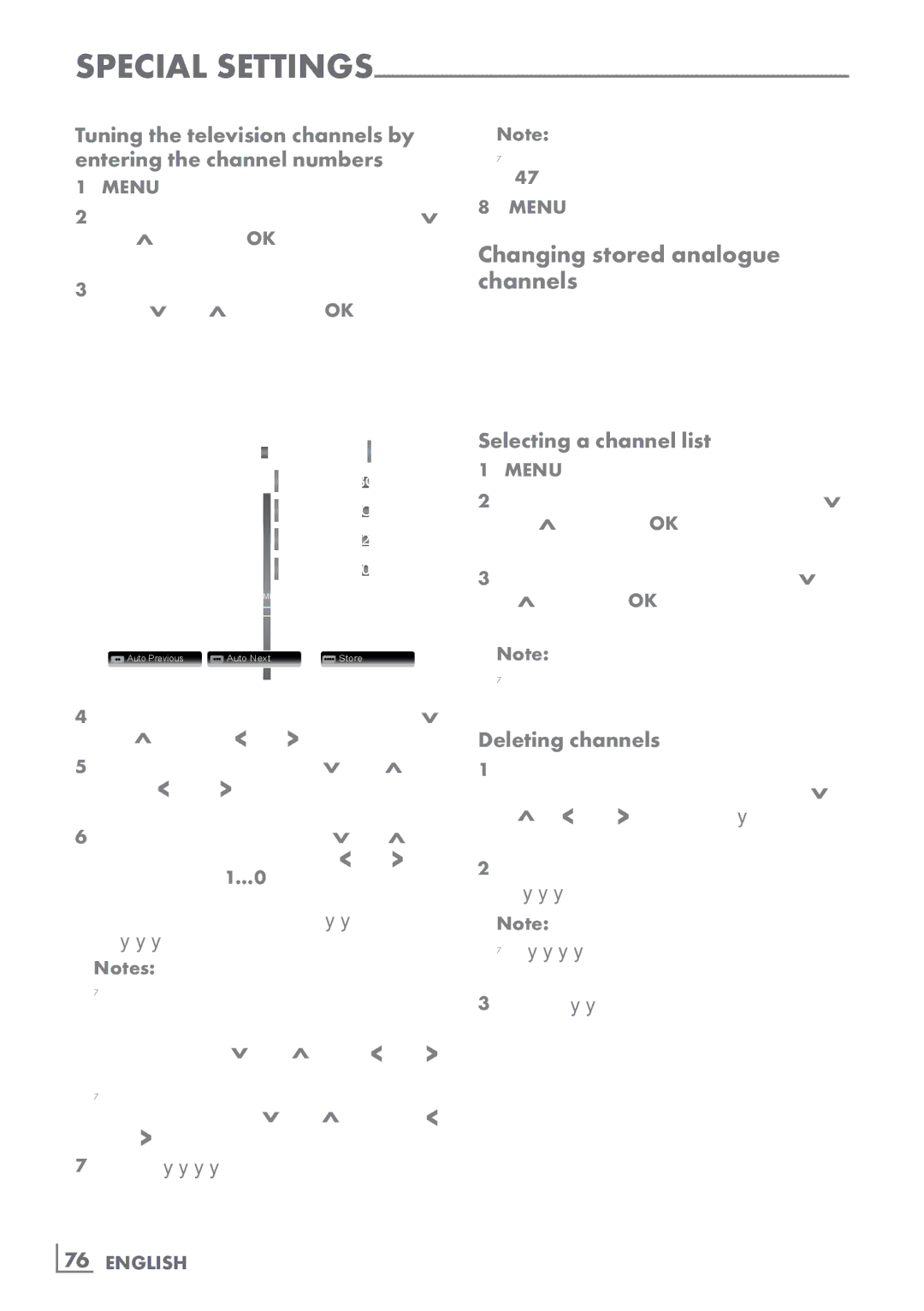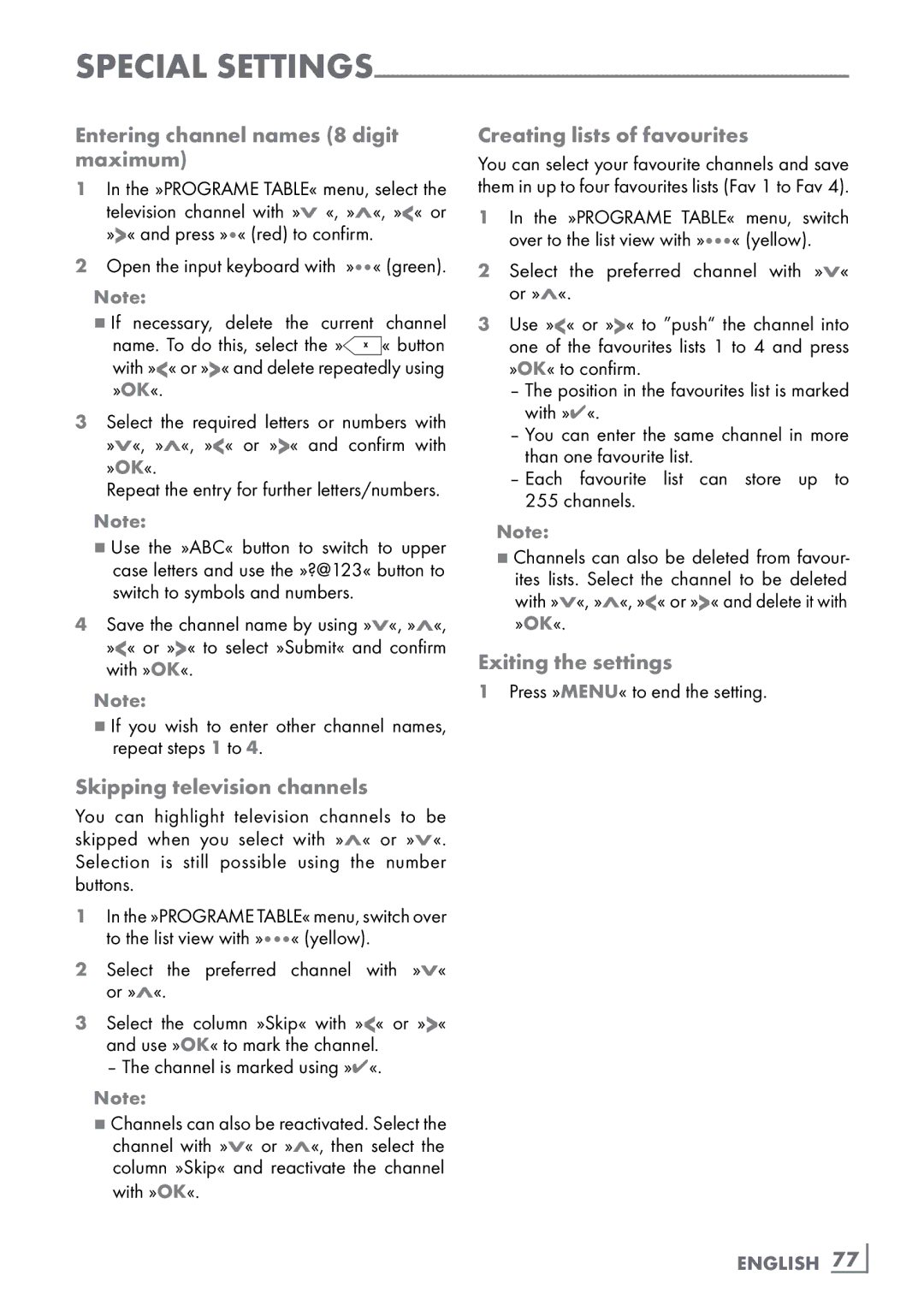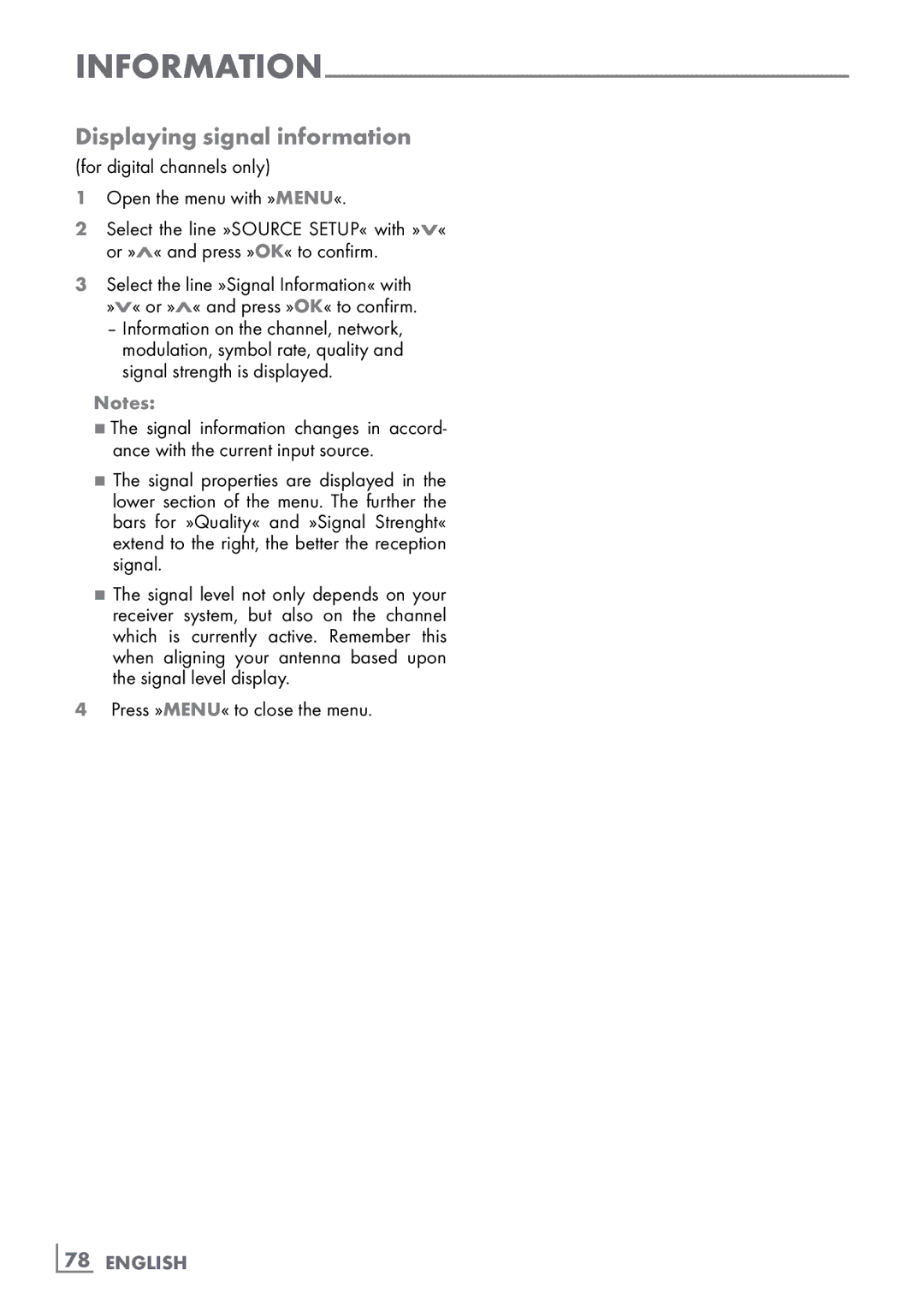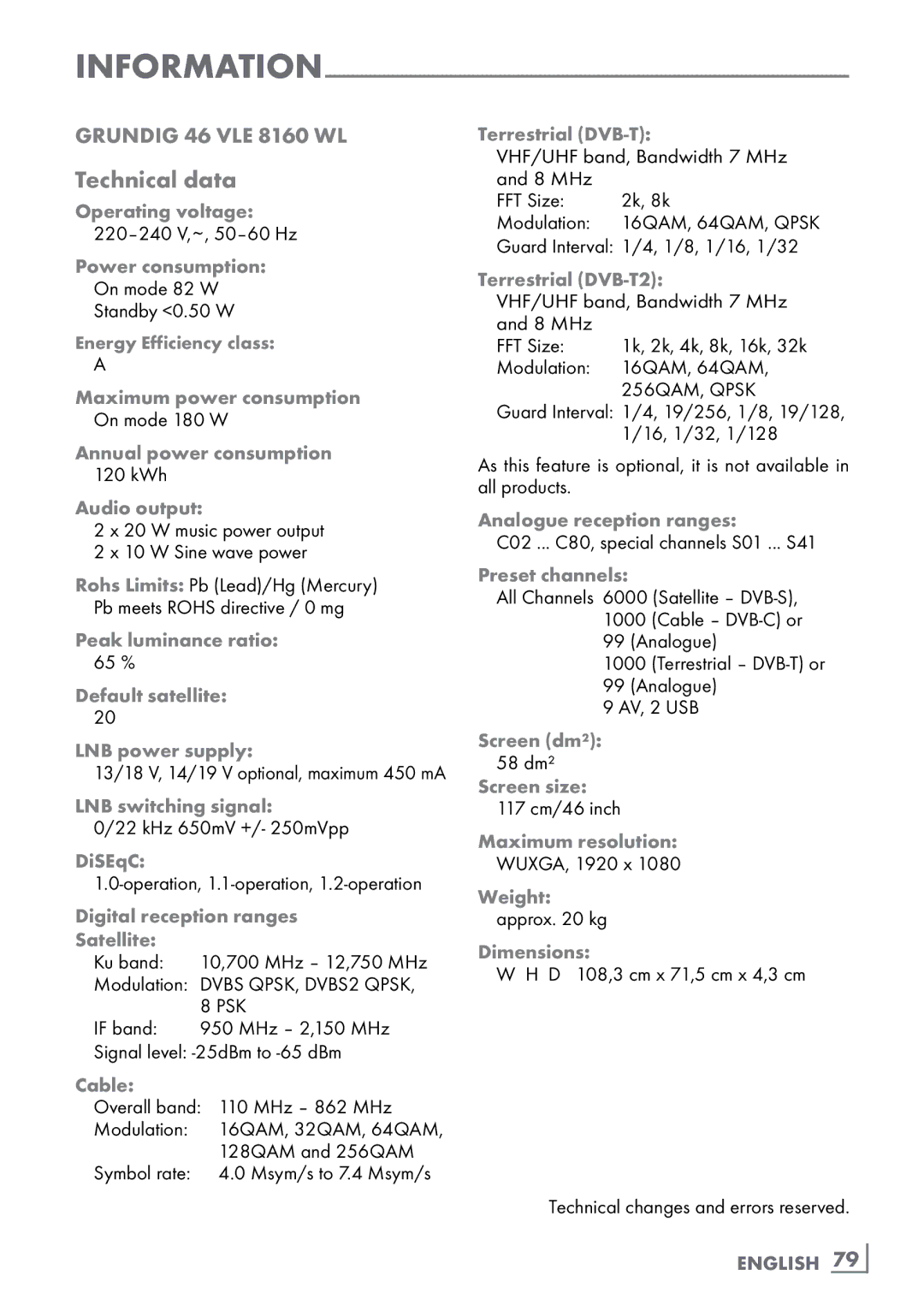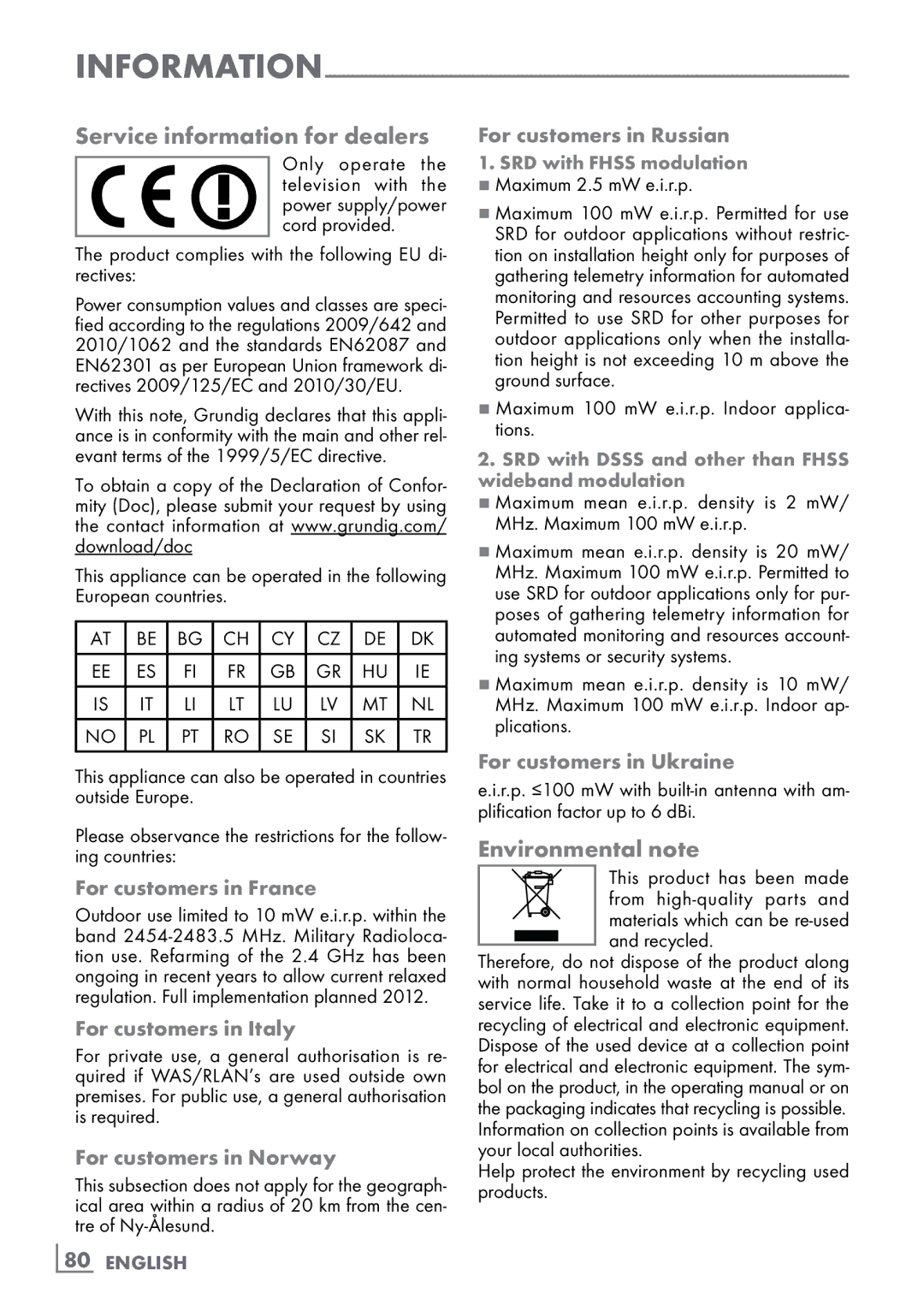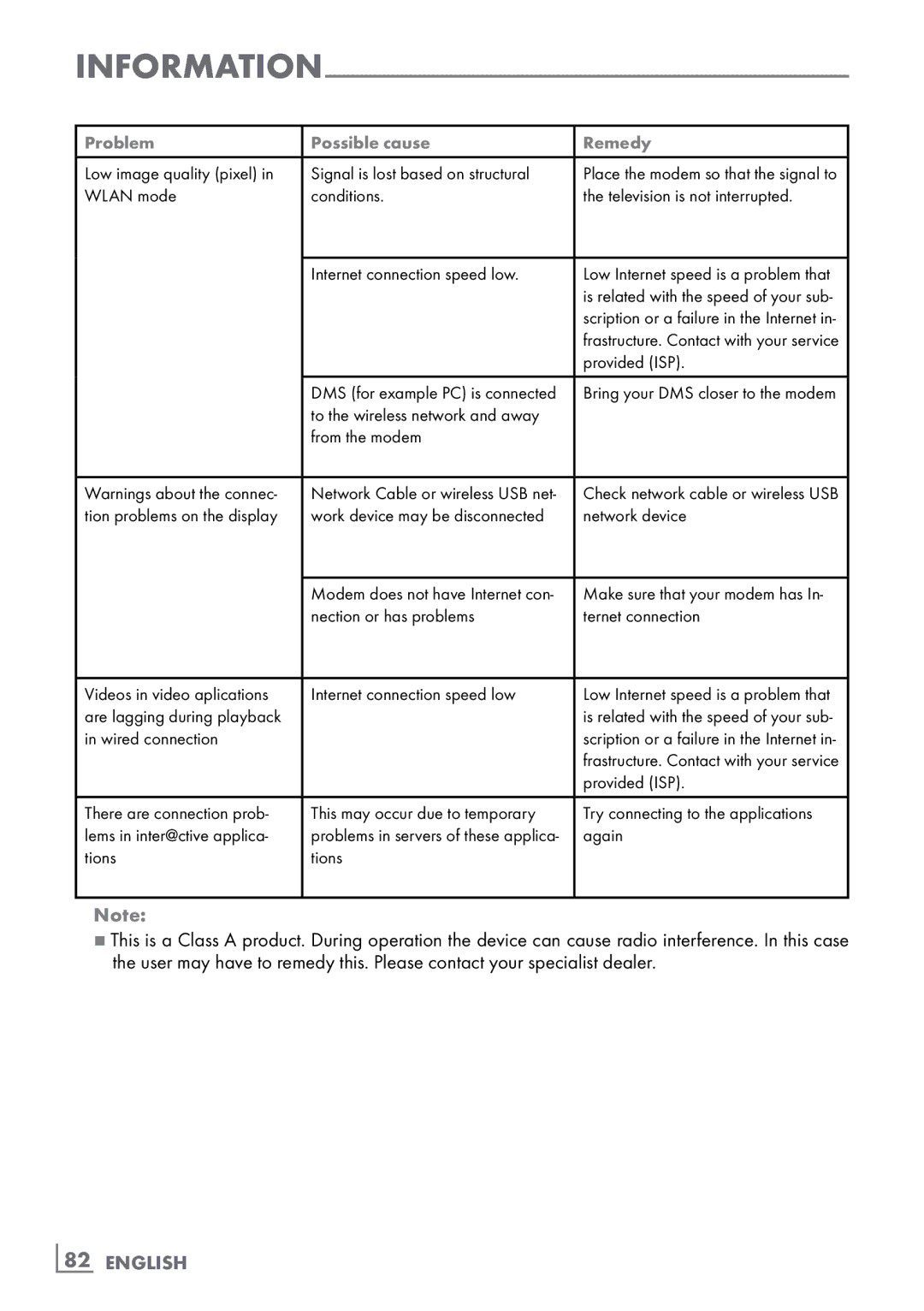GRUNDIG 46 VLE 8160 WL
Technical data
Operating voltage:
Power consumption: On mode 82 W Standby <0.50 W
Energy Efficiency class:
A
Maximum power consumption On mode 180 W
Annual power consumption 120 kWh
Audio output:
2 x 20 W music power output
2 x 10 W Sine wave power
Rohs Limits: Pb (Lead)/Hg (Mercury) Pb meets ROHS directive / 0 mg
Peak luminance ratio: 65 %
Default satellite: 20
LNB power supply:
13/18 V, 14/19 V optional, maximum 450 mA
LNB switching signal:
0/22 kHz 650mV +/- 250mVpp
DiSEqC:
Digital reception ranges
Satellite: |
|
Ku band: | 10,700 MHz – 12,750 MHz |
Modulation: DVBS QPSK, DVBS2 QPSK, | |
| 8 PSK |
IF band: | 950 MHz – 2,150 MHz |
Signal level:
Cable:
Overall band: 110 MHz – 862 MHz
Modulation: 16QAM, 32QAM, 64QAM, 128QAM and 256QAM
Symbol rate: 4.0 Msym/s to 7.4 Msym/s
Terrestrial (DVB-T):
VHF/UHF band, Bandwidth 7 MHz and 8 MHz
FFT Size: Modulation:
Guard Interval: 1/4, 1/8, 1/16, 1/32
Terrestrial (DVB-T2):
VHF/UHF band, Bandwidth 7 MHz and 8 MHz
FFT Size: 1k, 2k, 4k, 8k, 16k, 32k
Modulation: 16QAM, 64QAM, 256QAM, QPSK
Guard Interval: 1/4, 19/256, 1/8, 19/128, 1/16, 1/32, 1/128
As this feature is optional, it is not available in all products.
Analogue reception ranges:
C02 ... C80, special channels S01 ... S41
Preset channels:
All Channels 6000 (Satellite –
1000 (Terrestrial –
99(Analogue) 9 AV, 2 USB
Screen (dm²):
58dm²
Screen size:
117cm/46 inch
Maximum resolution:
WUXGA, 1920 x 1080
Weight:
approx. 20 kg
Dimensions:
W H D 108,3 cm x 71,5 cm x 4,3 cm
Technical changes and errors reserved.

